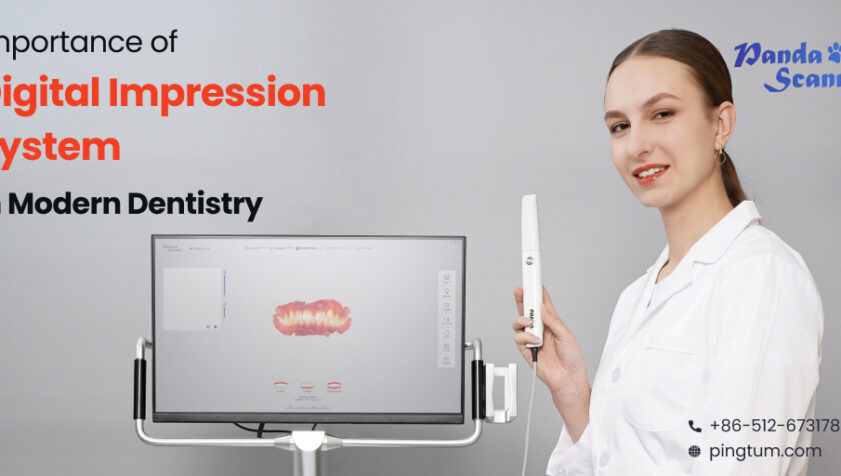Modern dentistry has undergone a technological revolution that has completely changed how dentists diagnose, organise, and carry out procedures. The digital impression system, which has turned conventional impression-taking techniques into a streamlined and accurate digital procedure, is one such ground-breaking breakthrough. Due to their many benefits, such as increased accuracy, a better patient experience, and increased efficiency, digital impression systems have quickly gained popularity.
So, let’s find out the vital function that digital impression systems play in contemporary dentistry and examine the advantages they offer to both patients and dental professionals.

Importance of Digital Impression System in Modern Dentistry
Digital impressions are anticipated to become much more sophisticated as technology develops, improving the accuracy and efficiency of dental operations. Dentists who embrace the digital revolution will be able to give their patients outstanding care and improve the results of their treatments.
An Advancement in Precision
With the latest digital scanners, digital impression systems have replaced the traditional practise of employing messy and painful impression materials. These scanners produce extremely precise 3D photographs of the patient’s teeth and oral anatomy. Dental experts may perform exact measurements and assessments using digital imprints because they give a thorough and comprehensive perspective. Digital impressions assist dentists in reaching a higher degree of precision in treatment planning and execution by removing human mistakes associated with traditional impression processes.
Improved Patient Experience
Patients no longer have to put up with the discomfort and inconvenience of cumbersome imprint trays and gag-inducing materials. Digital imprint technologies provide a more pleasant and efficient alternative, enhancing the patient experience dramatically. Since digital scanners are non-invasive, they make the process more comfortable for patients, lowering anxiety and increasing overall satisfaction. Furthermore, digital impressions are rapid and do not require several retakes, reducing chair time and letting patients spend less time in the dentist’s office.
Better Communication and Collaboration
Digital impression systems allow dental practitioners, dental laboratories, and patients to communicate and collaborate in real time. The digital data may simply be exchanged online, removing the requirement for physical impression transmission. Dentists and dental technicians may interact in real time, discussing treatment plans and making required changes digitally. This effective communication speeds the procedure and ensures that the final restorations fulfil the expectations and requirements of the patient.
Time and Cost Efficiency
Today, the efficiency of dental practises have dramatically increased because of digital impression system. The removal of traditional imprint materials and associated laboratory costs minimises dental practitioners’ overhead expenditures. Furthermore, the digital process reduces the amount of time necessary for impressions, model preparation, and transportation to dental laboratories. Dental restorations can be made in-house using on-site milling and 3D printing technology, lowering turnaround time and allowing for faster treatment completion.
Versatility and Integration
Furthermore, digital impression systems work in tandem with other digital technologies utilised in modern dentistry, like computer-aided design and manufacturing (CAD/CAM) systems. The digital data generated by digital impressions may be readily transferred into CAD/CAM software, enabling exact restoration design and production. From diagnosis through final restoration delivery, this integration improves the accuracy and efficiency of the whole treatment process.
Final Thoughts
In modern dentistry, a digital impression system is an essential aspect of how dentists approach treatment planning and execution. They are vital tools for dentistry practises because of the benefits they provide, such as better accuracy, an improved patient experience, effective communication, and time and cost savings. Digital impression systems are anticipated to improve further as technology advances, contributing to ever more precise and patient-centred dental care. Adopting this advanced technology not only raises the quality of care but also improves the whole dental experience for both practitioners and patients.






